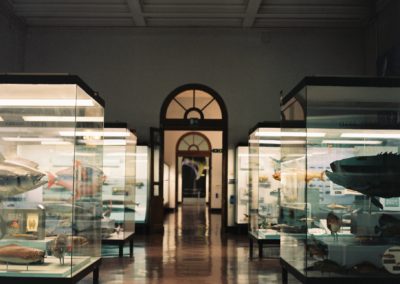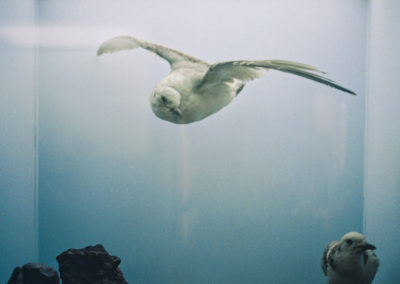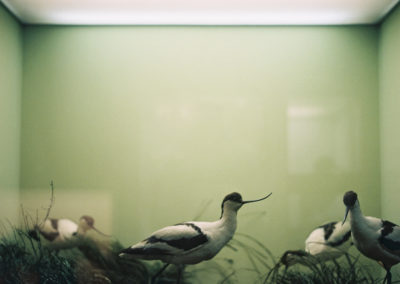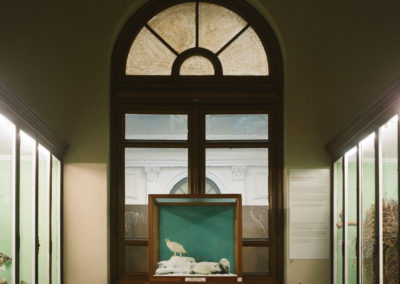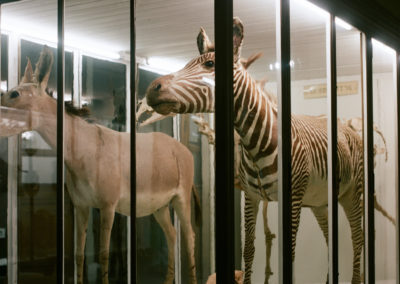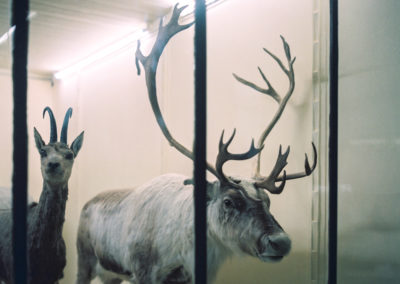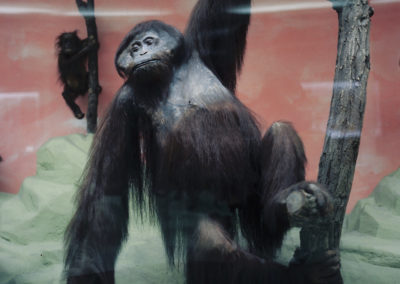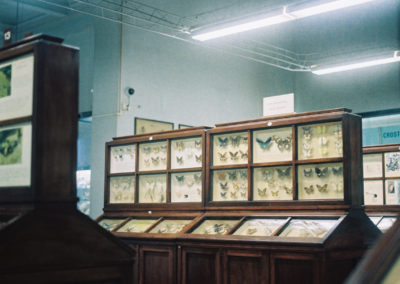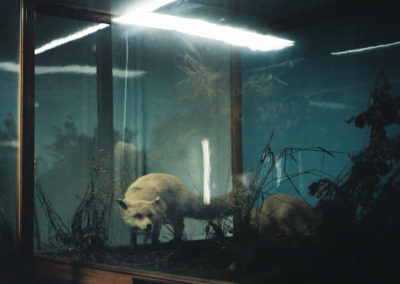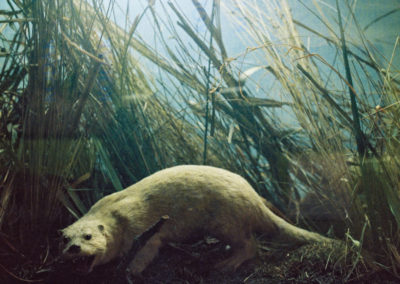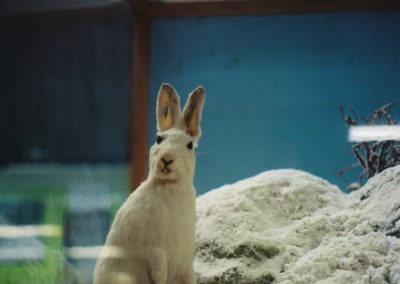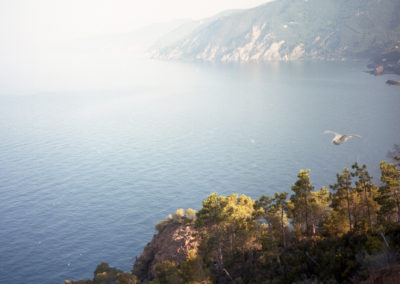Natural History
2024 – ongoing
This project explores the relationship between humans and nature through the lens of the Natural History Museum of Genoa, founded in 1867 to study, classify, and preserve natural specimens. These specimens, taken from their habitats and displayed as knowledge, reflect a power dynamic rooted in curiosity, fear, and the desire for control. Some of the animals showcased were taxidermied in the 19th century, with some species now extinct. Like photography, which preserves moments against the passage of time, taxonomy resists death and highlights humanity’s attempt to control vulnerability.
The project focuses on the museum’s interiors, examining its historical significance and reflecting on 19th- and 20th-century mindsets. By doing so, it re-evaluates the museum’s role—not just as a repository of knowledge but also as a space for artistic reflection. Using a medium-format analog Hasselblad camera, I aimed to evoke the era of the museum’s peak while emphasizing its structure, beauty, and rigor.
Through this project, I seek to enhance the museum’s heritage, re-evaluating its role also as a place for artistic reflection. The images, which portray nature displayed behind vitrines, invite reflection on how humanity has controlled and distanced itself from the natural world for its own convenience since the 19th century. I hope to challenge the perception of humans as passive observers of nature, advocating instead for a more integrated and activist role for the museum.
The last three images of this ongoing project are collages combining analog photographs of the museum’s specimens with recent archival analog images of the landscapes where these animals once lived. The intention is to symbolically return these animals to their natural habitats, as if through a time machine, and to invite the viewer to reflect on themes of loss, memory, and hope.
Two dypitiques have earned the honorable mention at the EPEX (Europe Photography Exhibition) in 2024.
